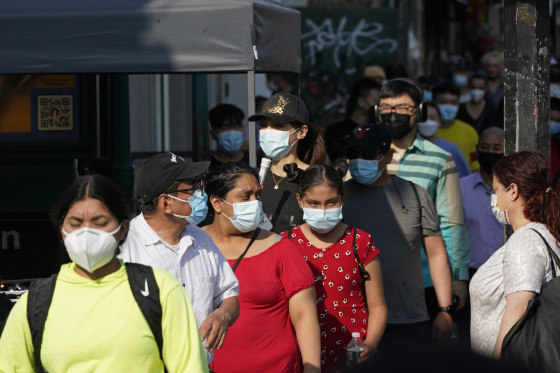The dramatic growth of the Latino population in every state revealed by census data released last week doesn’t cancel fears that Latinos were significantly undercounted, according to a national Hispanic group.
“Just because the Latino population increased does not mean every single Latino was enumerated,” said Arturo Vargas, executive director of National Association of Latino Elected and Appointed Officials Educational Fund.
More than half of the nation's growth came from Hispanics, 2020 census data showed. But experts in Latino growth say the population is likely to be larger.
Some analysts have said fears of a larger-than-usual Latino undercount could be set aside after last week's release because the data showed that the Latino/Hispanic population had grown to 62.1 million, close to what pre-census estimates projected.
“Nothing could be further from the truth,” Vargas said in a Facebook live webinar on Latino growth based on census data.
Latino growth outpaced the growth of the rest of the nation, 23 percent to 7.4 percent, the most recent data show.
The Census Bureau is verifying its count results, which won’t be known until next year.
Vargas said one reason for skepticism is a separate demographic analysis the Census Bureau released in December. The analysis produced low, mid-range and high estimates of what the Latino population would be in the 2020 census.
The analysis reviews births, deaths and migration patterns to arrive at population estimates.
“Many of us were a little surprised that the 2020 census came out on the lower end of those estimates,” he said.
Research by demographer William O’Hare, an adviser to the organization Count All Kids, suggests that the bureau may have missed 832,000 Latino youths, an increase in the number missed in the 2010 census.
“We continue to have significant concerns about the accuracy of the 2020 census,” Vargas said.
The census data showed strong growth among Latinos under 18.
Latinos overall now account for 18.7 percent of the U.S. population, about 19 million Latino youths. More than a quarter of the nation’s under-18 population is Latino.
While the 18-and-under population for all racial and ethnic groups fell by 1.4 percent, Latinos in the age group increased by 9.5 percent, Vargas said.
“The nation’s young people are becoming much more diverse, and any policies that affect young people and children necessarily must be implemented through a Latino lens,” Vargas said.
The Census Bureau will release more information in the coming months with more detailed data, such as breakdowns of Latinos and Hispanics by countries where they have roots.
Although Latinos are the second-largest population group in the country, “some other race” was the second-largest racial group in the census after non-Hispanic whites, surpassing Blacks/African Americans, Vargas said.
Only about 1 million people who responded “some other race” on the census race question weren’t Latino.
“We know that the vast majority of those who indicated they were of some other race also indicated they were Latino,” Vargas said.
Follow NBC Latino on Facebook, Twitter and Instagram.

